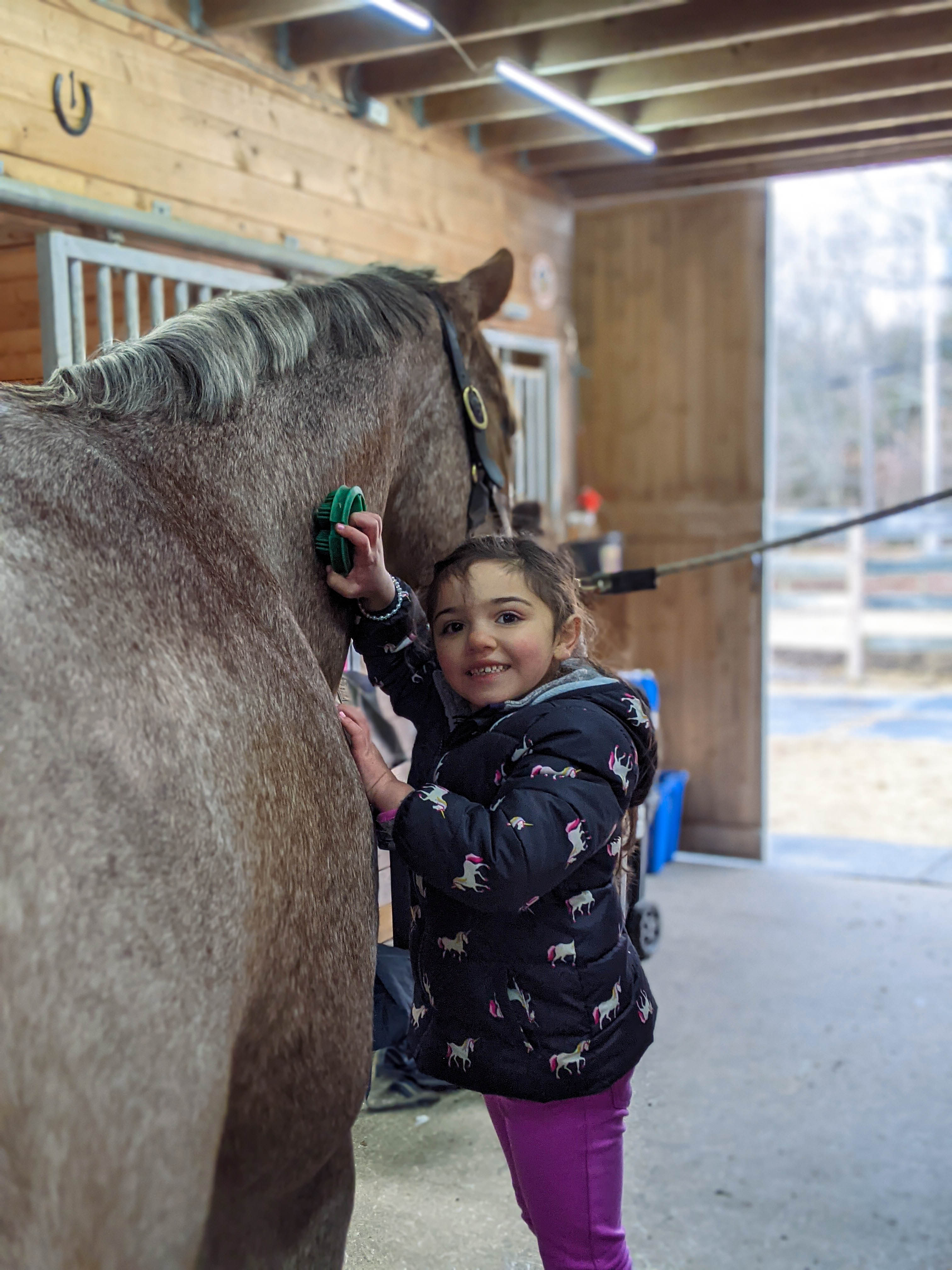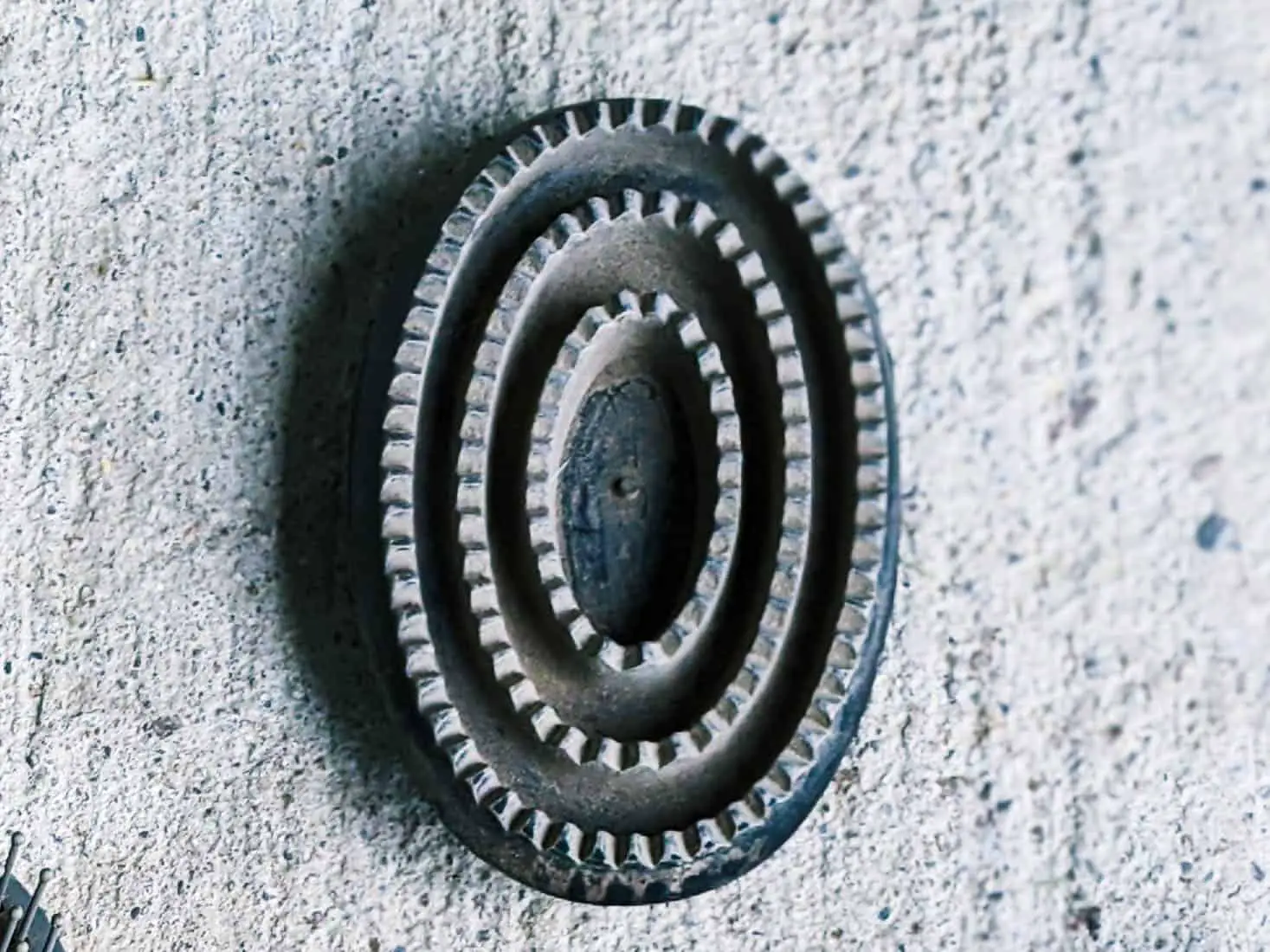Using a curry comb correctly on your horse is an important part of your grooming routine. In this article we’ll discuss the proper way to use a curry comb and the areas you should avoid. We’ll also review why currying your horse regularly is essential to his health.
Types of Curry Combs
Curry combs come in many variations. Most commonly they are a round shape in either and come in rubber, soft rubber, plastic or metal. They also come in the form of a rubber grooming mit which is also a handy tool for bathing your horse.
Metal Curry Comb: Great for removing heavily caked dirt, heavy duty type of curry comb and should be used gently.
Rubber Curry Comb: The standard type of curry comb that comes in many sizes and has some degree of flexibility so it is more versatile and can be used in multiple areas. This is the most common type of curry comb and does a great job getting the bulk of dirt off of your horse.
Plastic Curry Comb: Similar to a rubber curry comb in shape and size but lacks the same flexibility. Not as harsh as a metal curry comb but be careful in sensitive areas.
Soft Rubber Curry Comb: A very flexible curry comb with soft bristles that can be used gently in sensitive areas.
Grooming Mit: A rubber curry comb that fits over your hand like a mitten, tends to have very short bristles. Made of rubber and very flexible so it can be used all over the majority of the body just like a standard rubber curry comb. This is my favorite type to use for giving my horse a bath.
How To Use A Curry Comb
To use a curry comb properly, you’ll need to go in circular motions the same direction the horse’s hair grows. This will help lift dirt off of the skin and up to the surface of the hair where you can remove it. If your horse has heavily caked on mud you may need to curry comb the hair in the opposite direction that it grows to help get the dirt out.
If you’re using a rubber or soft plastic curry comb don’t be afraid to put some elbow grease into and really get the dirt out. However, if the curry comb is a hard plastic or made of metal you’ll need to be gentle so as not to hurt your horse’s sensitive skin or muscles.
Since the curry comb will lift and move the horse’s hair, it’s important to follow currying with a hard or soft brush to smooth the hair back into the correct pattern. Otherwise, your horse may be uncomfortable.
Areas To Avoid Using The Curry Comb
Generally speaking, you should not use a standard curry comb anywhere on the horse that is not well muscled. These areas include the horse’s head, especially near their eyes and their lower legs below their knees and hocks. Horses don’t have muscle on their lower legs, just bones, tendons, ligaments and cartilage. So currying your horse’s lower legs can cause injury.
Additionally, if your horse has a sensitive back or other painful areas on their body due to injury or lameness be very gentle!
My horse Beau has a very sensitive back and does not like to be curried where the saddle goes. He regularly sees a chiropractor and has a maintenance program. However, he still doesn’t like to have his back curried, so we try to be very gentle.

Areas To Use A Soft Curry Comb
While horses do still tend to get mud and caked on their head and legs, the curry comb could hurt them. Instead, get a very soft curry comb that is intended for use on sensitive areas. Having a variety of curry combs in your grooming kit will always come in handy.
You can gently use a soft curry comb in circular or straight motions on the horse’s head. On your horse’s legs you can use a very soft curry comb up and down in short strokes where the dirt is heaviest. But, be very careful.
Another technique you can use on these difficult to groom areas that tend to get dirty is a hard brush in many directions. While you would typically use a hard brush following a curry comb and in the same direction the hair grows, there are other methods.
If your horse has a lot of dirt in an area that can’t be curried, try brush the hair the incorrect direction opposite the way it grows. This should lift up the dirt as well. Then you can brush the hair back in it’s normal direction. Repeat this process as needed to lift up the dirt.
Why It’s Important To Curry Comb Your Horse Regularly
Currying your horse regularly is important for many reasons. First and foremost it prevents dirt and debris from getting stuck to the skin and causing irritation. It can also help prevent your horse from getting fungus or bacterial infections due to the skin being dirty.
In addition, currying your horse will also help improve your horse’s circulation which will promote a healthy shiny coat.
According to LuckyBraids.com currying your horse can also stimulate natural protective oils and help your horse’s coat repel water.
Other Uses For Curry Combs
Bathing: A rubber curry comb or grooming mitt is a great tool for bathing your horse if you need to give them a good scrub. Sponges are great for lathering up your horse and washing the hair but they won’t scrub dirt off of your horse’s skin. To learn more about bathing techniques and how I wash my horses, and which products I use, check out this article! How To Bathe Your Horse.
Cleaning Hair Off Of Equipment: A metal curry comb is also very handy for cleaning off your equipment. When hair, sweat and dirt get stuck to the bottom of your western saddle pad or fleece girth, try letting them air dry and then scraping them off with a metal curry comb!
Cleaning Off Other Brushes: A curry comb is also a handy tool for keeping your other brushes clean while you groom your horse. When you brush the dust off of your horse but it sticks to the brush, scrape it off with the curry. Then continue brushing your horse and scraping off the brush periodically. Then, you’ll be brushing your horse with a clean brush instead of smearing the dirt around!
I hope you found this article helpful! If you did, please give it a share!

